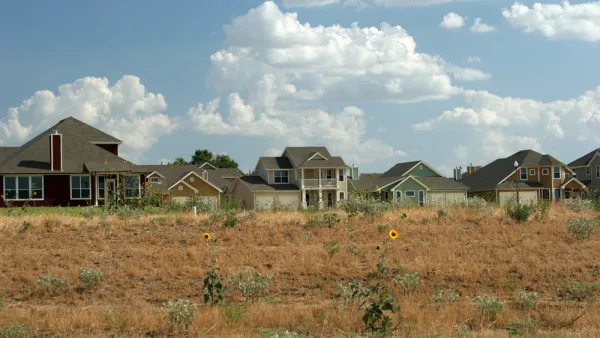With a whole portfolio of positive indicators about the health of the real estate market in Austin, a group of local industry leaders recently made predictions about what 2014 will bring for one of the country’s fastest growing metros.
Jan Buchholz provides comprehensive coverage of the relevant statistics explaining the dynamics of Austin’s ongoing real estate boom, which is driven by an influx of both residents and companies to the Texas state capital:
“From 2006 through 2013, the area has added 343,832 residents, but apartment construction and single family building permits haven’t come close to reaching the need…”
“About 1.2 million square feet of office space was absorbed in Austin in 2013.”
“17,736 apartments are under construction in the Austin market with nearly 4,500 of those in the Central Business District and Central Austin.”
As for the panel of real estate market experts, there predictions varied around market segments, but most indicated optimism. Predictions included questions about financing, a fiercely competitive commercial market, the return of the shopping center, and the need for transportation solutions.
FULL STORY: What to expect from Austin's roaring real estate scene during 2014

National Parks Layoffs Will Cause Communities to Lose Billions
Thousands of essential park workers were laid off this week, just before the busy spring break season.

Retro-silient?: America’s First “Eco-burb,” The Woodlands Turns 50
A master-planned community north of Houston offers lessons on green infrastructure and resilient design, but falls short of its founder’s lofty affordability and walkability goals.

Delivering for America Plan Will Downgrade Mail Service in at Least 49.5 Percent of Zip Codes
Republican and Democrat lawmakers criticize the plan for its disproportionate negative impact on rural communities.

Test News Post 1
This is a summary

Test News Headline 46
Test for the image on the front page.

Balancing Bombs and Butterflies: How the National Guard Protects a Rare Species
The National Guard at Fort Indiantown Gap uses GIS technology and land management strategies to balance military training with conservation efforts, ensuring the survival of the rare eastern regal fritillary butterfly.
Urban Design for Planners 1: Software Tools
This six-course series explores essential urban design concepts using open source software and equips planners with the tools they need to participate fully in the urban design process.
Planning for Universal Design
Learn the tools for implementing Universal Design in planning regulations.
EMC Planning Group, Inc.
Planetizen
Planetizen
Mpact (formerly Rail~Volution)
Great Falls Development Authority, Inc.
HUDs Office of Policy Development and Research
NYU Wagner Graduate School of Public Service





























